Solifugae (Camel Spiders) Profile
The term “solifugae” actually refers to more than just a single species of camel spiders. And they’re not spiders at all; instead, this is a different order in the class Arachnida. You may have also seen them called sun spiders or wind scorpions.
Camel spiders are nocturnal carnivores, and they prefer to live in dry or arid climates.
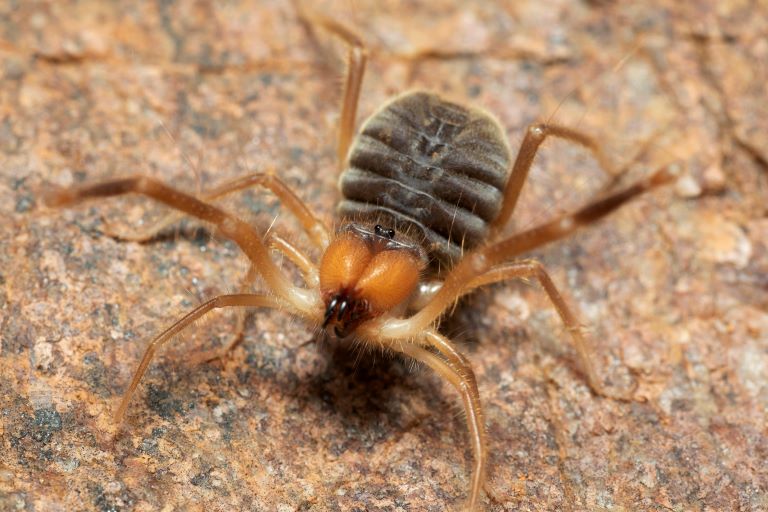
Solifugae (Camel Spiders) Facts Overview
| Habitat: | Deserts and scrubs |
| Location: | Almost everywhere with dry or arid climates |
| Lifespan: | Up to one year |
| Size: | 7 to 15 centimeters in length |
| Weight: | Around 2 ounces |
| Color: | Light brown, tan, dark brown |
| Diet: | Beetles, small lizards, termites, arthropods, small mammals, small birds |
| Predators: | Toads, frogs, scorpions, bats |
| Top Speed: | 16 kilometers per hour |
| No. of Species: | Over 1000 |
There are over 1000 different species of camel spiders. They are organized into 13 different families, with one of these families being entirely extinct.
Interesting Solifugae (Camel Spiders) Facts
1. They’re neither spiders nor scorpions.
Camel spiders can be a bit confusing. First, they also have the name wind scorpions. Second, they look like spiders, and they even have “spider” in the name. However, despite both of these facts, the camel spider is neither a scorpion nor a true spider.
Camel spiders are in an order all on their own. While they’re arthropods like scorpions and spiders, they’re only loosely related. Spiders are in the order Araneae, while scorpions are in the order Scorpiones. However, all three groups of species are in the class Arachnida.
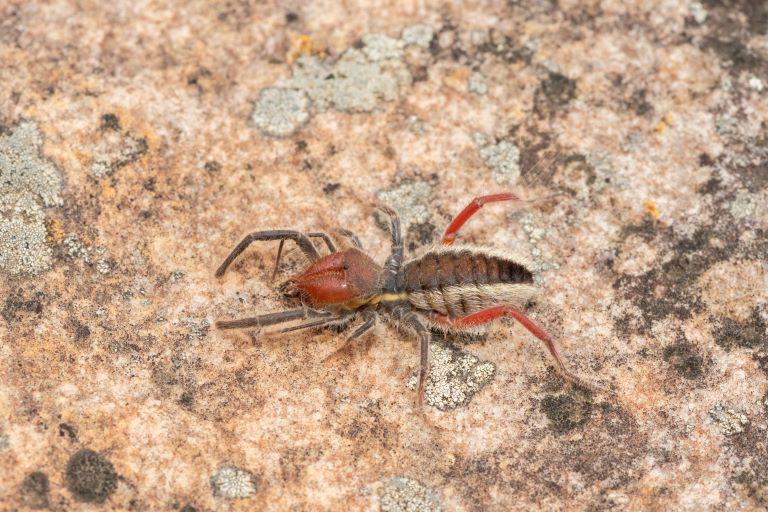
2. Camel spiders only reproduce once a year.
Camel spiders are typically known as univoltine. Uni- means one, while voltine refers to the number of broods that an animal has in a year. As a result, as a univoltine, camel spiders only reproduce once in a single year. 1
After mating with a male, female camel spiders will dig a burrow. Here, they will lay as many as 200 eggs. Some species will remain in the burrow to protect the eggs until the hatch. During this time, they will be unable to leave the burrow to eat, so they have been known to stock up on calories by eating large amounts of food prior to laying eggs.
3. The name “Solifugae” comes from Latin.
This order’s name comes for Latin. It can be translated to mean “those that flee from the sun”. While this name may seem a bit strange for a group of species known as sun spiders, it actually makes a lot of sense when you take a look at the lifestyle of most animals in the order of Solifugae. These species are nocturnal and prefer to spend their time in their burrows, keeping them effectively hidden from the sun.
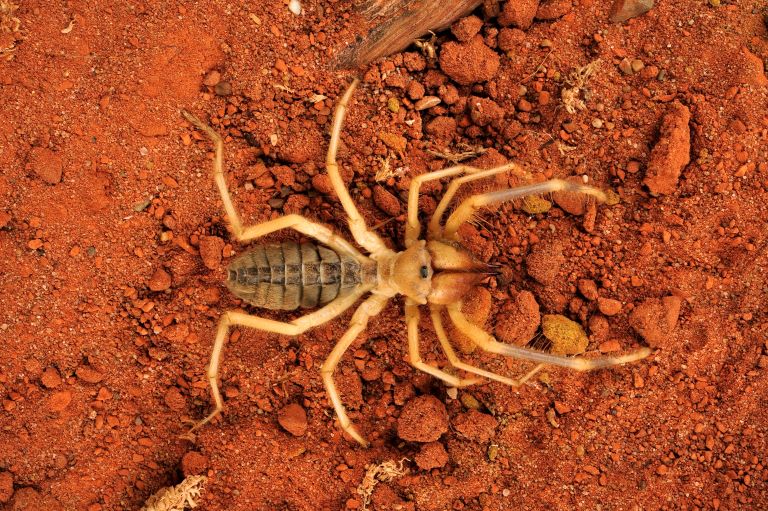
4. They’re the subject of many myths and urban legends.
Because of their size, there are many different myths and urban legends floating around the world about camel spiders. They’re not incredibly large, but they are larger than one may expect for an animal related to spiders and scorpions. They’re also extremely fast, reaching a maximum top speed of around 16 kilometers per hour.
However, many of the myths surrounding camel spiders are just that: myths. Camel spiders don’t have venom, and they’re more likely to try and flee from you than attack.
5. They have a bite strong enough to break human skin.
While it is true that a camel spider won’t go out of their way to attack you, they will act in self-defense. Camel spiders don’t produce any type of venom unlike scorpions or spiders. However, due to their large size, they do have mouthparts known as chelicerae that are strong enough to nip at human skin.
This isn’t any cause from concern, however. Other than a painful pinch, there are usually few complications associated with the camel spider’s bite, so long as the wound is kept clean afterwards.
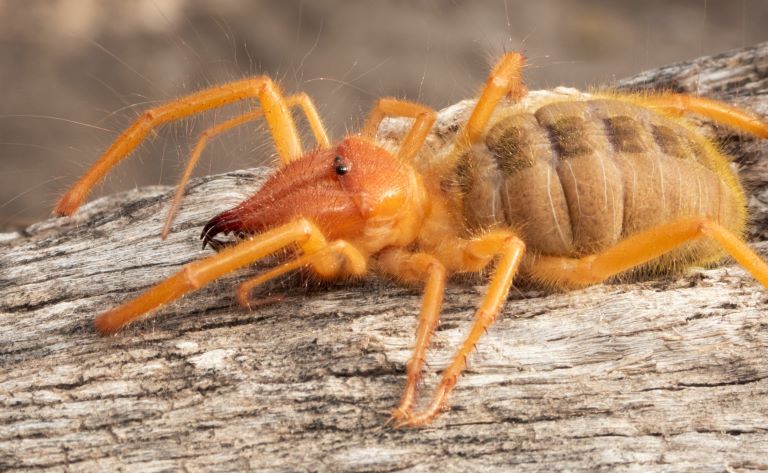
6. Its common name comes from a myth.
Wondering how the name camel spider even came about? Well, you actually thank one of the many myths surrounding Solifugae species for that.
One of the most well-known myths about the camel spider is that they attack camels. The urban legends describe them as jumping up to bite a camel’s stomach and inject a numbing venom. Then, it’s said that they eat pieces of the camel, especially their stomach!
However, this isn’t true.
While camel spiders will jump up and attach themselves to the bellies of camels, it’s not for food purposes. Instead, they attach themselves here to lay their eggs
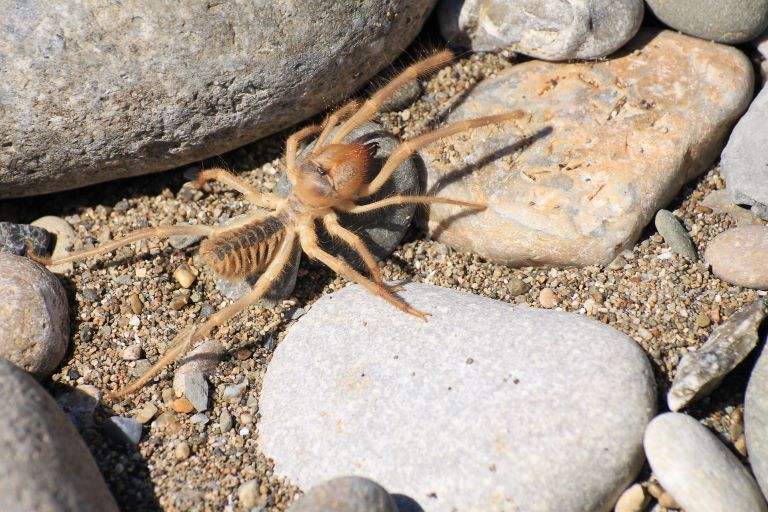
7. The camel spider’s color is for protection.
Although they may seem like an intimidating species, the camel spider actually has a wide variety of predators seeking to turn these critters into their next meal. Some of the most notable predators include scorpions and bats.
As a result, camel spiders have evolved to match their surroundings. Their tan and dark brown bodies perfeclty blend into their desert environments. This helps prevent predators, especially ariel predators like bats, from being able to easily spot and hunt them.
Solifugae (Camel Spiders) Fact-File Summary
Scientific Classification
| Kingdom: | Animalia |
| Phylum: | Arthropoda |
| Class: | Arachnida |
| Order: | Solifugae |
| Family: | 12 families |
Fact Sources & References
- Fred Punzo (1998), “The Biology of Camel-Spiders”, Springer US.
